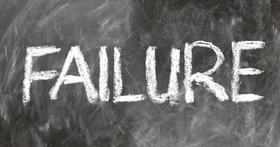The high school graduation rate is a "barometer of the health of American society and the skill level of its future workforce," according to Heckman and LaFontaine, the authors of a 2007 study. From a different perspective, graduation from high school can mean the difference between an individual student's future success and a future marred by unemployment, poverty, and even crime. Whether the viewpoint is broad or narrow, the significance of a high school diploma is evident. This article discusses government efforts to improve graduation rates, examines a recent study that attempts to gauge the magnitude of the dropout problem, and suggests steps that parents can take to encourage their children stay in school.
Introduction
In an age of information technology and a global economy, high school graduation is a minimum requirement for higher education and gainful employment. It is surprising, therefore, that there is no national average graduation rate on which all experts can agree. That is because there are numerous methods for calculating graduation rates. Estimates have ranged from 66 to 88 percent as a national average graduation rate, with 70 percent accepted by many authorities as the best estimate. Moreover, an average graduation rate does not tell the whole story. Black and Hispanic students drop out at higher rates than Non-Hispanic white students and Asian/Pacific Islander students. Students in urban environments are much less likely to finish high school than students in suburban areas. In some years, boys drop out at a higher rate than girls. These differences make improving graduation rates even more complicated.
No Child Left Behind
The No Child Left Behind Act of 2001 (NCLB) contains numerous initiatives designed to improve the performance of under-achieving school children. Graduation rates are addressed in a section called the Dropout Prevention Act. The purpose of the Act is to fund effective dropout prevention programs.
Under NCLB, the Secretary of Education will collect data on the effectiveness of programs funded by the Act in reducing dropout rates and increasing graduation rates. A national clearinghouse will disseminate dropout prevention information to state and local educational agencies and schools. Also, NCLB began a national program to recognize schools that have made extraordinary progress in lowering dropout rates
To provide accountability, federal assistance under NCLB is conditioned on providing reports of dropout prevention activities and dropout data broken down by race and ethnicity. To measure progress, the dropout data must include dropout rates for the two years prior to receiving a grant under the program. Moreover, each state must provide to the Secretary of Education information on the status of the activities funded and the outcome data for the schools.
NCLB determines graduation rates using the annual event school dropout rate for students leaving school in a single year determined in accordance with the National Center for Education Statistics' Common Core of Data. The event school dropout rate is based on the percentage of both public and private high school students who left high school between the beginning of one school year and the beginning of the next school year without earning a high school diploma or GED. The event school dropout rate for 2005, the last year available, is 3.8 percent. The report analyzing the 2005 data states that the event school dropout rate does not provide a picture of the dropout problem generally because it only takes into account the number of students who dropped out within one academic year.
This video reports on the top graduation rates in 2021.
Reaction to NCLB
The goal of increasing graduation rates by funding dropout prevention programs and maintaining accountability for the results is one strategy among many that NCLB uses to raise student achievement. Of course, every initiative has its critics. Some commentators have taken exception to the method used under NCLB to determine graduation rates, claiming that it inflates graduation rates. If so, the information based on the state reporting will understate the magnitude of the dropout problem.
Others have complained that the Department of Education is not adequately enforcing the NCLB reporting requirements. According to one source, some states have not submitted any data, some states have not broken down the rates by race and ethnicity, and some states have turned in incorrect data. For example, one state reported a graduation rate of 97 percent for 2003. The rate was determined based on the percentage of graduates who got their diplomas within four years. Under this method of calculation, the graduation rate is inflated because dropouts are disregarded entirely.
2008 Study of Graduation Rates
A report issued in April 2008 on high school graduation rates has generated considerable media attention. Cities in Crisis: A Special Analytic Report on High School Graduation was authored by Christopher B. Swanson, Ph. D., of the EPE Research Center, and supported by America's Promise Alliance and the Bill & Melinda Gates Foundation. The report studies graduation rates in the nation's 50 most populous school districts and the larger metropolitan areas in which they are located.
The study uses the Cumulative Promotion Index (CPI) method to determine graduation rates. The CPI views graduation as a process rather than an isolated event in the 12th grade. The graduation rate is determined by multiplying four ratios (using 2003-04 as an example): (10th graders in fall 2004 ÷ 9th graders in fall 2003) x (11th graders in fall 2004 ÷ 10th graders in fall 2003) x (12th graders in fall 2004 ÷ 11th graders in fall 2003) x (diploma recipients in spring 2004 ÷ 12th graders in fall 2003). The product of the four ratios is the likelihood that a ninth grade student in the fall of 2003 will graduate from high school on time. GED recipients are not counted as high school graduates under the CPI method.
The study concluded that the schools in the largest cities are truly experiencing a crisis in graduation rates. Looking solely at the most populous school districts, here is some of the data that the study revealed:
- 52 percent of students in the 50 largest school districts on average fail to graduate with a high school diploma.
- The Detroit, Indianapolis, Cleveland, and Baltimore school districts all had graduation rates below 40 percent.
- 13 school districts had graduation rates between 40 and 50 percent, including Minneapolis, Dallas, New York City, Denver, and Miami.
- Only six school districts had graduation rates above the national average of 70 percent.
- Mesa had the highest graduation rate of 77.1 percent.
The study also reveals a substantial disparity between graduation rates for urban and suburban high schools in the same metropolitan area. The study found that on average 58 percent of students in urban districts graduated compared to 75 percent of students in the suburban communities. For example, the principal Baltimore school district had a graduation rate of less than 50 percent. Suburban areas within the Baltimore municipality located adjacent to the principal school district had graduation rates of 70 to 80 percent and 80 to 90 percent. An area even further out from the principal school district had graduation rates of 90 to 100 percent.
The different graduation rates between urban and suburban high schools reflect a disturbing inequity in the public school system. The disparity is so great that the study described the urban and suburban schools as "two very different worlds" existing within the public school system. Now that the crisis in graduation rates in the large cities has been demonstrated, legislators and educators have the difficult job of turning the rates around. We do not yet know the extent to which the dropout prevention programs funded by NCLB will help the urban school districts to improve their graduation rates.
This video reports on the ffect of graduation rates on the economy.
Early Response to 2008 Study
Some critics have already voiced objections to the 2008 study. Some claim that the graduation rates from the study are too low. Attention is being focused on the method for estimating graduation rates. For example, an Atlanta school official cited the use of different formulas to explain why the study reflected a graduation rate eight percentage points lower than the Georgia education department's data. One criticism relates to the CPI method of using data from the ninth grade because the numbers in the ninth grade include students from the eighth grade as well as students who were held back, a combination referred to as the "ninth grade bulge."
Anticipating the release of the 2008 study showing that Detroit's public schools had the lowest graduation rate in the country for the third consecutive year, the school superintendent announced sweeping reforms in five Detroit urban high schools. The restructuring plan calls for the existing schools to be split into smaller schools with 450 students at each school. Breaking larger schools into smaller learning communities is one of the dropout prevention strategies specifically approved by NCLB. A shake-up in personnel is also planned. All principals' contracts will expire in 2008 and those who will be retained will be offered new contracts. The fate of the reform plan is uncertain, however, because the superintendent did not seek advance approval of the school board.
Department of Education Proposal for Uniform Formula
The foregoing discussion indicates that, no matter how graduation rates are calculated, they are too low and need to be increased. Yet the different formulae for calculating graduation rates have seemingly generated more controversy about the precise rates than about solving the dropout problem. Directly addressing this issue in remarks on April 1, 2008, U.S. Secretary of Education Margaret Spellings announced that she will take administrative steps to require all states to use the same formula to calculate how many students graduate from high school on time and how many drop out. The resulting data will be published so that the public can make nationwide comparisons. The Secretary did not reveal the specific formula she will propose as the national standard.
Tips for Encouraging Children to Stay in School
If you are a parent of a child who attends school in an urban area, you have your work cut out for you. The graduation rates are distressingly low in urban areas compared to suburban areas. Massive changes are probably required to bring the rates in urban areas up to a par with rates in suburban areas. Given the dismal circumstances, your interest and encouragement could be the determining factor that places your child in the half that graduates rather than in the half that drops out.
You can motivate your child to stay in school more effectively if you find out why the child wants to drop out. Students drop out of high school for many reasons, including failing grades, pregnancy, family problems, and dating problrms. Dropouts often complain that their classes are too boring. If you know the source of the problem, you are more likely to find a resolution.
Here are some tips for parents who want their children to be high school graduates rather than dropouts.
- Remain involved in your child's education all the way through high school.
- Find out the graduation rates for your state, your school district, and your child's school. These figures will give you some idea of the dropout risk your child faces. For state-by-state progress under NCLB, including graduation rates, see this site.
- If a child is failing in a particular subject, find out whether the school provides tutors for children who need remedial help in the subject. If there is nothing available through the school, hire a private tutor if finances permit. College students and even other high school students can be effective tutors at very reasonable rates.
- Beginning in middle school, emphasize to your child that his or her grades are important to you – and to his or her future. Some students say that they would have worked harder to stay in school if their parents' expectations had been higher.
- Talk with your child about what he or she would like to do in the future. Then explain the educational requirements for pursuing that work.
- Consider whether your child's failing grades could be the result of an undetected medical problem. Possible conditions are: eyesight needs correction; poor hearing; sleep problems; dyslexia; depression; social anxiety.
- If your child starts talking about how boring his or her classes are, you should be alert to a possible drop-out problem.
- Keep up with your child's attendance records because frequent absences suggest a potential dropout program.
- If your child wants to drop out of high school because he or she hates sitting in classrooms on subjects that are not of any interest, find out whether there is a vocational high school in your district where he or she could earn a high school diploma and also receive hands-on training for future employment. Some vocational high schools have apprenticeships with local businesses where the child gets credit for being out in the "real world."
- If your child is pregnant, let her know that she can attend high school throughout a normal pregnancy and resume school after the baby's birth. Depending on the circumstances, day care programs may be available at little or no cost. Emphasize that it is imperative that she graduate from high school so that she can support her child in the future.
- Your child may have friends who are studying for a GED after dropping out of high school. This route may seem to be an appealing alternative to failing grades and boring classes. Explain to your child that a GED is not the same as a high school diploma. A high school diploma is generally the superior credential. For example, high school graduates have priority over GED holders in military recruitment. Some employers perceive high school diplomas as superior to GEDs, which might make a difference in getting selected for a job.
If, notwithstanding your best efforts, your child drops out of high school, there are still some options. A dropout may be able to get a high school diploma by attending an adult high school program or an online high school. A dropout can also get a GED, which although not completely equivalent to a high school diploma, is far better than having no credential at all.
Conclusion
Our entire society has an enormous interest in finding ways to prevent students from dropping out of school. Parents have a responsibility to do their upmost to encourage their children to graduate. The goal should be for every child to receive a high school diploma, absent exceptional circumstances. NCLB has tackled the problem by funding dropout prevention programs. There is no single solution, however. Dropout prevention will require sustained, concerted efforts by the federal government, states, school districts, individual schools, students, and parents.
Questions? Contact us on Facebook @ publicschoolreview














